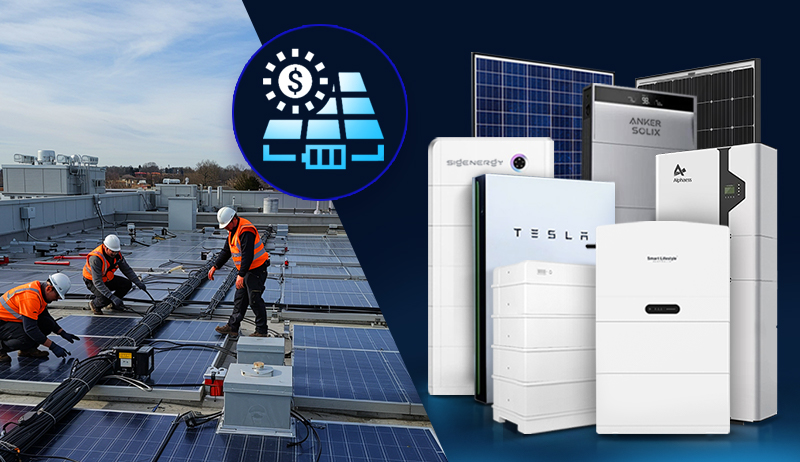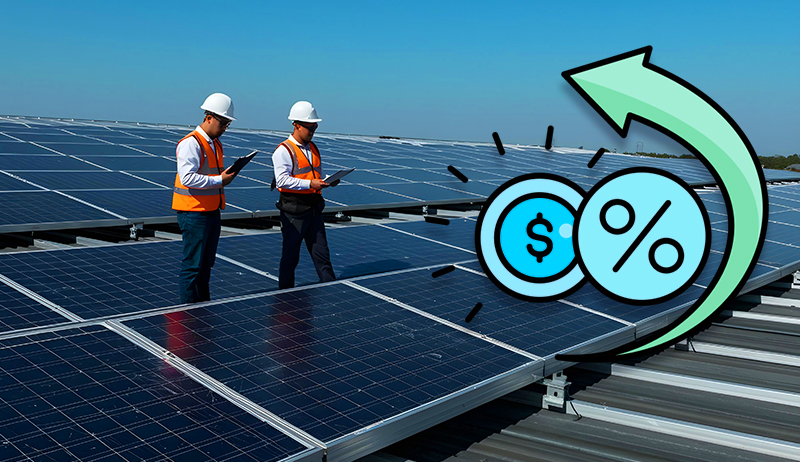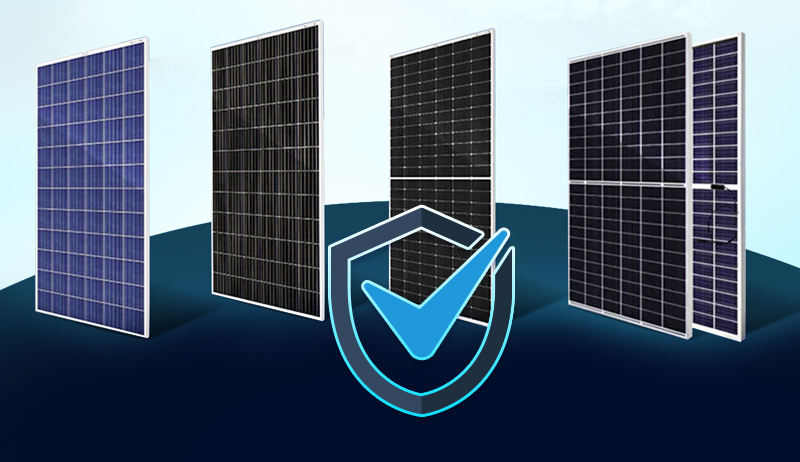Introduction New Technology of Wind Energy
The world of wind energy is constantly evolving, with new technologies emerging to make wind farms more efficient, powerful, and environmentally friendly.
The wind industry is also focused on developing technologies that minimize the environmental impact of wind farms. This includes studies on the impact of turbines on birdlife and marine mammals, as well as developing quieter and more visually appealing turbine designs.
Here are some of the most exciting advancements:
1. Floating Wind Turbines:
One of the biggest limitations of traditional wind farms is their dependence on land. Floating wind turbines break this barrier by being anchored in deep waters, where wind speeds are stronger and more consistent. This opens up vast new areas for wind energy development, especially in countries with limited land availability.
2. Larger and More Efficient Turbines:
Wind turbine technology is constantly pushing the boundaries of size and efficiency. Modern turbines have blades that can reach over 200 meters in diameter, capturing significantly more wind energy than their predecessors. These advancements lead to increased power generation and lower costs per unit of electricity.
3. Advanced Materials and Design:
New materials like lighter and stronger composites are being used in turbine blades, allowing for longer spans and increased efficiency. Additionally, innovations in blade design, such as twisted or oscillating blades, are being explored to optimize performance in different wind conditions.
4. Artificial Intelligence and Data Analytics:
Artificial intelligence (AI) is playing an increasingly important role in wind farm optimization. AI algorithms can analyze wind data and turbine performance to predict power output, optimize turbine placement, and improve maintenance schedules. This leads to more efficient and reliable wind energy production.
5. Integration with Other Renewables:
Wind farms are increasingly being integrated with other renewable energy sources like solar and storage. This creates a more flexible and resilient energy system, as different sources can compensate for each other’s variability.
6. Environmental Considerations:
The wind industry is also focused on developing technologies that minimize the environmental impact of wind farms. This includes studies on the impact of turbines on birdlife and marine mammals, as well as developing quieter and more visually appealing turbine designs.
Floating Wind Turbines
Anchoring Clean Energy in Deep Waters
Imagine towering wind turbines, not firmly rooted on land, but gracefully dancing atop the waves. This is the captivating reality of floating wind turbines, a revolutionary technology unlocking the vast potential of offshore wind energy.
Breaking Free from Land’s Grip:
Traditional wind farms are limited by the shallow waters their fixed-foundation turbines can handle. But floating turbines break free from this constraint, venturing into the boundless depths where wind speeds are stronger and more consistent. This opens up a treasure trove of renewable energy in regions with limited landmass or challenging coastlines, like Japan and Portugal.
Engineering Marvels:
These majestic giants of the sea are feats of engineering ingenuity. Their foundations, often resembling semi-submersible platforms or spar buoys, provide a stable base even as waves surge around them. Sophisticated mooring systems, incorporating chains and anchors, keep them tethered to the seabed, ensuring they weather the fiercest storms.
Harnessing the Ocean’s Might:
The deeper waters offshore offer not just stronger winds, but also steadier ones. This translates to higher capacity factors, meaning these turbines generate electricity more consistently than their land-based counterparts. Think of it as a reliable friend, always there to lend a hand (or rather, a gust) when you need it most.
Scaling Up and Beyond:
The technology is still in its early stages, but the growth potential is immense. Governments and energy companies are pouring investments into research and development, aiming to make floating wind cost-competitive with traditional sources. With larger turbines and improved designs on the horizon, the future looks bright for these ocean-borne powerhouses.
Floating Wind Turbines Projects
Anchoring Clean Energy: A Voyage Through Floating Wind Turbine Projects
Floating wind turbines are no longer a futuristic dream, but a tangible reality revolutionizing the renewable energy landscape. These majestic giants dance atop the waves, harnessing the ocean’s boundless wind power in previously inaccessible deep waters. Let’s embark on a voyage through some of the most groundbreaking floating wind turbine projects currently making waves:
1. Hywind Scotland (United Kingdom):
Pioneering the way, Hywind Scotland stands as the world’s first operational floating wind farm. Commissioned in 2017, this project off the coast of Aberdeenshire boasts a single 6MW turbine, proudly generating clean energy for over 5,000 homes. Its success paved the way for further advancements in the technology.
2. WindFloat Atlantic (Portugal):
Venturing further into the Atlantic, WindFloat Atlantic showcases the scalability of floating wind. This Portuguese project, operational since 2020, features three 8MW turbines, powering around 60,000 homes and showcasing the technology’s potential for large-scale energy production.
3. Kincardine Offshore Windfarm (United Kingdom):
Claiming the title of the world’s largest floating wind farm at the time of its completion in 2021, Kincardine Offshore Windfarm off the coast of Aberdeen boasts five 8MW turbines. This project not only generates clean energy for over 55,000 homes but also serves as a testing ground for innovative turbine designs and grid integration solutions.
4. Hywind Tampen (Norway):
Demonstrating the adaptability of floating wind to harsh environments, Hywind Tampen braves the icy waters of the North Sea. This project, operational since 2022, features five 8MW turbines powering an offshore oil and gas platform, showcasing the technology’s potential for decarbonizing industrial operations.
5. St Brieuc Offshore Wind Farm (France):
Looking ahead, the St Brieuc Offshore Wind Farm in France promises to be a game-changer. Scheduled for completion in 2025, this project will boast 62 11MW turbines, generating enough clean energy to power over 830,000 homes. Its sheer scale highlights the immense potential of floating wind to contribute significantly to national energy needs.
Table of Floating Wind Turbines Projects Worldwide
Table of Floating Wind Turbine Projects (Sorted by Capacity)
| Project Name | Country | Year Commissioned | Number of Turbines | Total Capacity (MW) | Status |
|---|---|---|---|---|---|
| St Brieuc Offshore Wind Farm | France | (2025, Planned) | 62 | 682 | Under construction |
| Kincardine Offshore Windfarm | United Kingdom | 2021 | 5 | 40 | Operational |
| Hywind Tampen | Norway | 2022 | 5 | 40 | Operational |
| WindFloat Atlantic | Portugal | 2020 | 3 | 24 | Operational |
| Hywind Scotland | United Kingdom | 2017 | 1 | 6 | Operational |
| WindFloat Atlantic II | Portugal | (2024, Planned) | 2 | 22 | Under development |
| TetraSpar Floating Wind Project | France | (2025, Planned) | 20 | 200 | Under development |
| Goto Offshore Wind Farm | Japan | (2023, Planned) | 7 | 49 | Under development |
| Moray West Project | United Kingdom | (2027, Planned) | 85 | 1190 | Under development |
| Coexist Project | Portugal | (2026, Planned) | 20 | 200 | Under development |
Notes:
- This table is the same as the previous one, but sorted by total capacity (number of turbines multiplied by turbine capacity).
- Projects under development are included with their planned capacities.
I hope this sorted table provides a clearer view of the capacity of different floating wind turbine projects.
Benefit of Floating Wind Turbines
Floating wind turbines, those majestic giants dancing atop the waves, offer a treasure trove of benefits for both clean energy production and environmental well-being.
Let’s dive into some of the key advantages of this revolutionary technology:
Harnessing the Untapped:
- Access to stronger, steadier winds: Unlike their land-based counterparts, floating turbines venture into deep waters where wind speeds are more consistent and powerful. This translates to higher energy production and more efficient electricity generation.
- Unlocking vast new areas: Land constraints are a thing of the past! Floating turbines open up previously inaccessible deep-water regions, expanding the potential for wind energy development, especially in countries with limited landmass.
Environmental Champions:
- Reduced visual impact: Gone are the concerns about visual clutter on land. Floating turbines gracefully blend into the seascape, minimizing visual impact on coastal communities and preserving scenic beauty.
- Minimal land use: No need to compete with precious land resources for agriculture, forests, or urban development. Floating turbines keep their footprint at sea, allowing harmonious coexistence with terrestrial ecosystems.
- Lower noise pollution: Compared to their land-based counterparts, floating turbines generate less noise pollution, creating a more peaceful environment for coastal communities and marine life.
Technological Triumphs:
- Scalability and cost reduction: As technology matures and projects like St Brieuc demonstrate, floating wind farms can be scaled up to meet large-scale energy needs. This paves the way for cost reduction through economies of scale, making clean energy even more accessible.
- Co-location potential: Existing offshore infrastructure like oil and gas platforms can be co-located with floating wind turbines, optimizing resource utilization and minimizing environmental impact.
- Innovation playground: The offshore environment presents a unique set of challenges, spurring innovation in turbine design, mooring systems, and grid integration solutions, benefiting the entire wind energy industry.
Economic Powerhouse:
- Job creation: From construction and maintenance to research and development, floating wind farms create new jobs in diverse sectors, boosting local economies and fostering skilled workforces.
- Energy security and independence: Reliance on imported fossil fuels diminishes as countries harness the abundant wind resources in their own waters, leading to greater energy security and independence.
- Decarbonization and sustainability: At the heart of it all, floating wind turbines are champions of the fight against climate change. By providing clean, renewable energy, they contribute significantly to decarbonization goals and a sustainable future.
These are just some of the numerous benefits that make floating wind turbines a beacon of hope in the transition to a clean energy future. As technology advances and projects continue to flourish, these gentle giants of the sea will undoubtedly play a crucial role in powering our world with the boundless energy of the wind, while preserving the delicate balance of our planet.
https://www.exaputra.com/2024/01/new-technology-of-wind-energy-floating.html
Renewable Energy
Meat–It’s What’s for Dinner, if You Don’t Care about the Animals or the Planet
 We often hear meat-eaters say things like, “If beef isn’t good, why do the manufacturers of plant-based burgers try so hard to make their burgers taste like real meat?”
We often hear meat-eaters say things like, “If beef isn’t good, why do the manufacturers of plant-based burgers try so hard to make their burgers taste like real meat?”
There is no doubt that cow and pig meat tastes and smells great; every vegan on Earth will tell you that.
The problem lies elsewhere, in a) the environmental impact of clearing the rainforests to make room for more cows, and b) the cruelty inherent in factory farming and the slaughtering of the animals.
Meat–It’s What’s for Dinner, if You Don’t Care about the Animals or the Planet
Renewable Energy
FAQs: Your Most Common Commercial Solar Questions Answered
The post FAQs: Your Most Common Commercial Solar Questions Answered appeared first on Cyanergy.
https://cyanergy.com.au/blog/faqs-your-most-common-commercial-solar-questions-answered/
Renewable Energy
Socialism and Autocracy
 20th Century Austrian-American economist and devout anti-communist Ludwig von Mises clearly believed what he said at left, and there were plenty of examples in the 1900s to support his concept.
20th Century Austrian-American economist and devout anti-communist Ludwig von Mises clearly believed what he said at left, and there were plenty of examples in the 1900s to support his concept.
Now, 50 years after his death, we wonder what he would think about today’s United States.
The U.S. has an economy that’s as close to unadulterated capitalism as anyone could imagine, but we have a president who is most definitely an authoritarian, a would-be dictator.
-
Climate Change4 months ago
Guest post: Why China is still building new coal – and when it might stop
-
Greenhouse Gases4 months ago
Guest post: Why China is still building new coal – and when it might stop
-
Climate Change2 years ago
Spanish-language misinformation on renewable energy spreads online, report shows
-

 Greenhouse Gases2 years ago
Greenhouse Gases2 years ago嘉宾来稿:满足中国增长的用电需求 光伏加储能“比新建煤电更实惠”
-
Climate Change Videos2 years ago
The toxic gas flares fuelling Nigeria’s climate change – BBC News
-

 Climate Change2 years ago
Climate Change2 years ago嘉宾来稿:满足中国增长的用电需求 光伏加储能“比新建煤电更实惠”
-

 Carbon Footprint2 years ago
Carbon Footprint2 years agoUS SEC’s Climate Disclosure Rules Spur Renewed Interest in Carbon Credits
-
Climate Change2 years ago
Why airlines are perfect targets for anti-greenwashing legal action








 Full energy assessment
Full energy assessment




